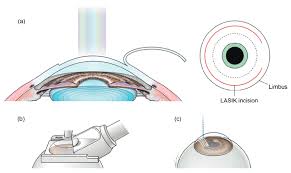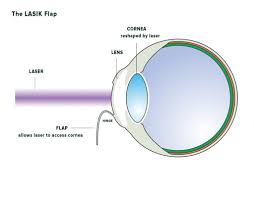Table of Contents
ToggleFor those considering a career in the Marine Commandos (MARCOS), a special force within the Indian Navy, maintaining optimal physical fitness and vision is paramount. Given the rigorous demands of their duties, the question of whether LASIK (Laser-Assisted In Situ Keratomileusis) is allowed often arises.
In this blog post, we will explore the role of MARCOS, their operational responsibilities, and why certain vision correction surgeries, like LASIK, are not permissible for MARCOS personnel. Our aim is to provide military personnel, eye care seekers, and medical professionals with a detailed understanding of this topic.
Understanding MARCOS
The Marine Commandos, known as MARCOS and officially referred to as the Marine Commando Force (MCF), serve as the elite forces of the Indian Navy.
Originally known as the Indian Marine Special Force, this unit was subsequently rebranded as the Marine Commando Force to foster “a sense of individuality,” according to the Indian Navy.
The acronym ‘MARCOS’ was adopted subsequently.
Capabilities and Operations
MARCOS are well-known for their proficiency in navigating a variety of environments, including sea, air, and land.
Their wide-ranging capabilities have earned them an international reputation for professionalism.
They are particularly active in specialized maritime operations in Jammu and Kashmir, focusing on the Jhelum River and Wular Lake, while also undertaking counter-insurgency missions in the area. Furthermore, select MARCOS units are integrated into the tri-services Armed Forces Special Operations Division.
Operational Responsibilities
MARCOS’ responsibilities have evolved over time, adapting to the changing needs of both strategic and tactical operations. Here’s a comprehensive look at their duties:
- Support to Amphibious Operations: Providing essential support to naval forces during amphibious missions.
- Special Surveillance and Reconnaissance: Conducting surveillance and reconnaissance operations in hostile territories.
- Clandestine Operations: Participating in covert missions, encompassing specialized raids and underwater operations.
- Direct Action: Executing high-stakes missions requiring immediate and decisive action.
- Hostage Rescue Operations: Specializing in rescuing hostages from perilous situations.
- Counter-Terrorism Operations: Tackling terrorist threats with precision and expertise.
- Asymmetric Warfare: Conducting unconventional warfare to disrupt and destabilize enemy forces.
- Foreign Internal Defense: Assisting allied nations in strengthening their internal security.
- Suppression of Enemy Air Defenses (SEAD): Assisting the Indian Air Force in neutralizing enemy air defences.
Their versatility and highly specialized training make MARCOS an indispensable component of the Indian Navy.
Vision Requirements for MARCOS
The rigorous demands of MARCOS operations necessitate excellent vision. Due to the nature of their responsibilities, even slight visual impairments can lead to serious consequences.
This brings us to the question of vision correction surgeries like LASIK.
What is LASIK?
LASIK is a type of refractive surgery used to correct vision problems such as myopia (nearsightedness), hyperopia (farsightedness), and astigmatism.
The procedure involves reshaping the cornea to enable light entering the eye to be properly focused onto the retina, resulting in clearer vision.
LASIK is popular due to its relatively quick recovery time and the immediate improvement in vision it offers.
Why is LASIK Not Permissible for MARCOS?
Kerato-Refractory Surgery, which includes procedures like PRK (Photorefractive Keratectomy), LASIK, and SMILE (Small Incision Lenticule Extraction), is not acceptable for special cadres such as submarine, diving, and MARCOS. Several factors contribute to this restriction:
1. Risk of Complications
Although LASIK is typically considered safe, it does carry some associated risks. Complications can include dry eyes, glare, halos, and even vision loss in rare cases.
For MARCOS personnel who operate in extreme conditions and rely heavily on their vision, these risks are deemed unacceptable.
2. Pressure Changes
MARCOS often operate in environments that involve rapid pressure changes, such as underwater or at high altitudes. These pressure fluctuations can affect the corneal flap created during LASIK surgery, potentially leading to complications or even dislodgement of the flap.
3. Recovery and Healing Time
Although LASIK boasts a quick recovery period, complete healing takes time. During this time, the cornea becomes increasingly susceptible to injury.
Given the high-intensity training and operations that MARCOS undertake, any delay in recovery or increased risk of injury is not viable.
4. Long-Term Stability
The long-term stability of vision correction achieved through LASIK can differ.
For MARCOS personnel, any regression or instability in vision could impair their ability to perform their duties effectively and safely.
- Night Vision Issues
Some LASIK patients report difficulties with night vision, an essential skill for MARCOS operatives who often operate under the cover of darkness.
The Takeaway
Joining the elite ranks of MARCOS requires meeting stringent physical and medical standards, including those related to vision. While LASIK and other kerato-refractive surgeries offer promising solutions for many, they are currently not permissible for MARCOS personnel due to the inherent risks and demands of their operations.
For those considering a career in MARCOS, it is essential to explore alternative methods for maintaining optimal vision and to consult with medical professionals who understand the specific requirements of this elite force.
By understanding the unique demands of MARCOS and making informed decisions about vision correction, you can take the first step towards joining one of the most respected special forces in the world.













